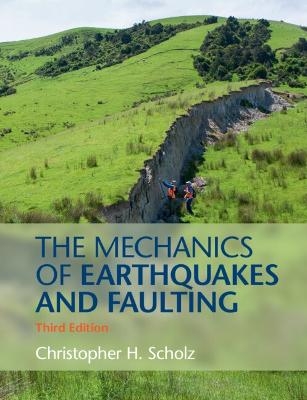
The Mechanics of Earthquakes and Faulting
Seiten
2019
|
3rd Revised edition
Cambridge University Press (Verlag)
978-1-316-61523-2 (ISBN)
Cambridge University Press (Verlag)
978-1-316-61523-2 (ISBN)
Scholz's classic text provides a unified treatment of earthquakes and faulting. This major update presents a wealth of new topics, including slow earthquakes; friction of phyllosilicates; fault structures; seismogenic versus creeping faults; triggering of earthquakes; oceanic, megathrust and deep earthquakes; and earthquake precursory phenomena.
This essential reference for graduate students and researchers provides a unified treatment of earthquakes and faulting as two aspects of brittle tectonics at different timescales. The intimate connection between the two is manifested in their scaling laws and populations, which evolve from fracture growth and interactions between fractures. The connection between faults and the seismicity generated is governed by the rate and state dependent friction laws - producing distinctive seismic styles of faulting and a gamut of earthquake phenomena including aftershocks, afterslip, earthquake triggering, and slow slip events. The third edition of this classic treatise presents a wealth of new topics and new observations. These include slow earthquake phenomena; friction of phyllosilicates, and at high sliding velocities; fault structures; relative roles of strong and seismogenic versus weak and creeping faults; dynamic triggering of earthquakes; oceanic earthquakes; megathrust earthquakes in subduction zones; deep earthquakes; and new observations of earthquake precursory phenomena.
This essential reference for graduate students and researchers provides a unified treatment of earthquakes and faulting as two aspects of brittle tectonics at different timescales. The intimate connection between the two is manifested in their scaling laws and populations, which evolve from fracture growth and interactions between fractures. The connection between faults and the seismicity generated is governed by the rate and state dependent friction laws - producing distinctive seismic styles of faulting and a gamut of earthquake phenomena including aftershocks, afterslip, earthquake triggering, and slow slip events. The third edition of this classic treatise presents a wealth of new topics and new observations. These include slow earthquake phenomena; friction of phyllosilicates, and at high sliding velocities; fault structures; relative roles of strong and seismogenic versus weak and creeping faults; dynamic triggering of earthquakes; oceanic earthquakes; megathrust earthquakes in subduction zones; deep earthquakes; and new observations of earthquake precursory phenomena.
Christopher Scholz is an emeritus professor at the Lamont-Doherty Earth Observatory at Columbia University where, over his fifty-year career, he has published over 300 papers on rock mechanics, fault mechanics, and the physics of earthquakes. He is a Fellow of the American Geophysical Union, and has been awarded the Murcheson Medal by The Geological Society of London, and the Reid Medal by the Seismology Society of America.
Preface to the first edition; Preface to the second edition; Preface to the third edition; 1. Brittle fracture of rock; 2. Rock friction; 3. Mechanics of faulting; 4. Mechanics of earthquakes; 5. The seismic cycle; 6. Seismotronics; 7. Earthquake prediction and hazard analysis; References; Index.
| Erscheinungsdatum | 04.01.2019 |
|---|---|
| Verlagsort | Cambridge |
| Sprache | englisch |
| Maße | 190 x 245 mm |
| Gewicht | 1190 g |
| Themenwelt | Naturwissenschaften ► Geowissenschaften ► Geologie |
| Naturwissenschaften ► Geowissenschaften ► Geophysik | |
| ISBN-10 | 1-316-61523-5 / 1316615235 |
| ISBN-13 | 978-1-316-61523-2 / 9781316615232 |
| Zustand | Neuware |
| Haben Sie eine Frage zum Produkt? |
Mehr entdecken
aus dem Bereich
aus dem Bereich


